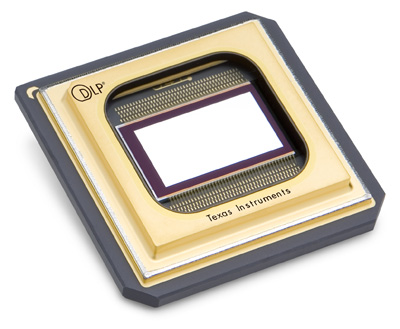
Digital Light Processing (DLP) technology has powered the world’s top display devices to deliver higher resolution images rich with colour, contrast, clarity and brightness for a wide range of applications, for more than 15 years. Now, Texas Instruments is set to take this award winning technology beyond the traditional projection, to new sectors like automotive, medical and industrial sectors.
“DLP is the most flexible display technology and possibly the most flexible semiconductor in the world with potential to enable new applications in industrial, automotive and medical sectors. With DLP, we want to spark innovation across India through solutions that will provide real impact in these sectors,” said Kent Novak, senior vice president and general manager, DLP Products, Texas Instruments Inc.
“In India, DLP currently powers nearly 99 per cent of the 7000 digital cinema screens across the country. DLP is also poised to deliver instant, big screen experiences to mobile phones. It currently holds approximately 60 percent market share in front projectors that are widely deployed in classrooms and office conference rooms. We see potential for these new application areas in the Indian market,” he added.
The DLP Projection
Since 1996, TI’s DLP technology has made significant growth in traditional projection applications for movie theaters (DLP Cinema), conference rooms, classrooms and home theaters. Also, the advancement of DLP Pico technology has enabled mobile devices to display images from the palm of your hand.
The DLP chip, or Digital Micromirror Device (DMD), is an electrical input, optical output micro-electrical-mechanical system (MEMS). The heart of DLP chips is an array of upto 8 million hinge mounted highly reflective aluminium micromirrors built on top of an associated CMOS memory cell, which allows developers to perform high speed, efficient, and reliable spatial light modulation.
Kent explains,”Using mirrors as a reflector technology, you can have more brightness. Also, it is not a transmissive technology therefore it will not fade over time. So if a cinema have DLP technology for years, it will have same picture quality as it was first time. These are some inherent benefits of this technology.”
DLP utilises the tilt patterns of these micromirrors for the projection of images or signals, each
micromirror either tilt towards (ON) the light source or away from it (OFF) upto ten thousand times per second as directed by the bit stream image code entered in the semiconductor. Switching a mirror ON more frequently than OFF, reflects a light gray pixel while a more frequent OFF reflects a darker gray pixel allowing these mirrors to reflect pixels in up to 1,024 shades of gray and convert the video or graphic signal entering the DLP chip into a highly detailed grayscale image.
For adding colors, the white light generated by the light source in a DLP projection display system passes through a colour filter which filters the light into a minimum of red, green, and blue allowing a single chip DLP system to create at least 16.7 million colours. There are systems using multi chip architectures, particularly for high brightness projectors required for large venue applications such as concerts and movie theaters which are capable of producing more than 35 trillion colors.
BrilliantColor Technology adds additional colors including Cyan, Magenta and Yellow to expand the colour palette for even more vibrant performance. Also, there are DLP projection display systems which utilise solid-state illumination as light source emitting the necessary colors and eliminating the color filter.
The New Sectors
“Over the years we have seen people buying DLP projectors and opening them to get the DLP chips and the light engine and then create innovative products other than display projectors out of it. So, we embraced this as our business,” Kent said announcing the expansion of TI’s DLP technology to new sectors.
A series of development toolkits grant direct access to the DLP chips for new innovation possibilities and light steering applications beyond traditional projection. “It is the beauty of the solutions, it is more providing development kits and depends upon how we drive a DLP chip differently for some of the non-display applications which can be the sequences that we use or the light sources that we use for the medical and industrial applications. But the basic chip is the same chip that we use in the projectors or those used in the small pico projectors,” Kent further added explaining the flexibility of the DLP technology.
Industrial
The scalability and high speed imaging capability of DLP technology allows for a variety of Machine Vision products that can be beneficial to the manufacturing industry in India. Highly accurate 3D scanning systems using DLP technology helps in getting detailed printouts, such as dental moulds, hearing aids and jewellery prototypes.
Automotive
With growing demands of user comfort and safety, automotive industry presents a big opportunity for utilizing DLP technology. TI has come up with latest solutions for the future in-car infotainment with augmented reality (AR) head-up display (HUD), digital dashboards and center console systems enabled by DLP technology marking DLP’s first official entry into the automotive industry.
Medical
DLP is an imaging technology which can provide real-time mapping and visualization data necessary for various medical applications from spectroscopy utilizing DLP-enabled hyperspectral imaging to assisting surgeons in performing difficult procedures like identification of the anatomical structures based on their chemical composition.
Pankaj V is technical journalist at EFY Gurgaon






